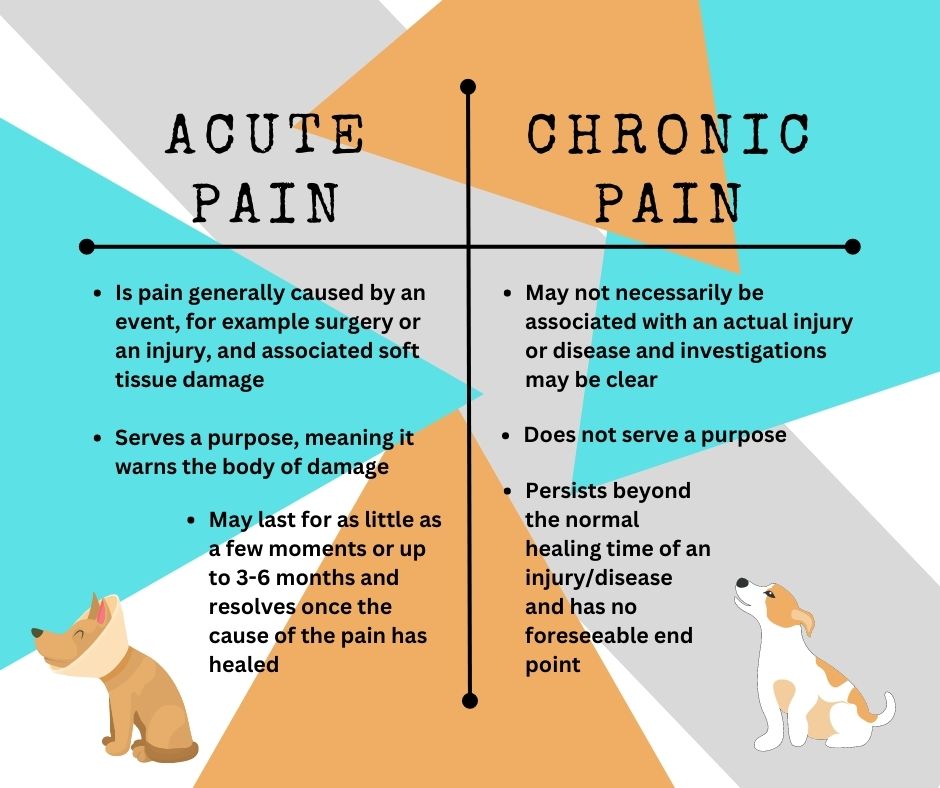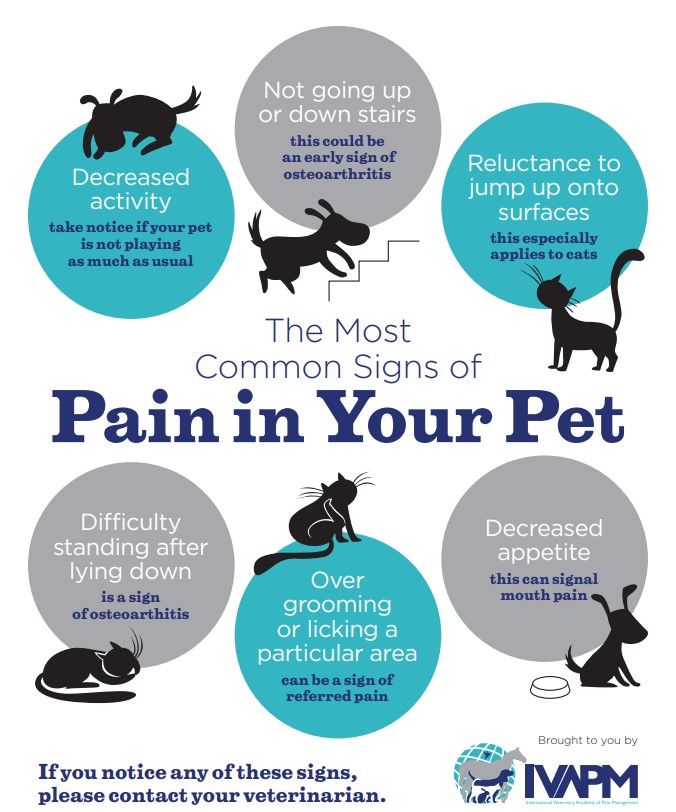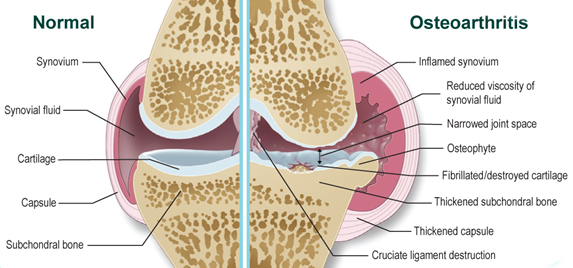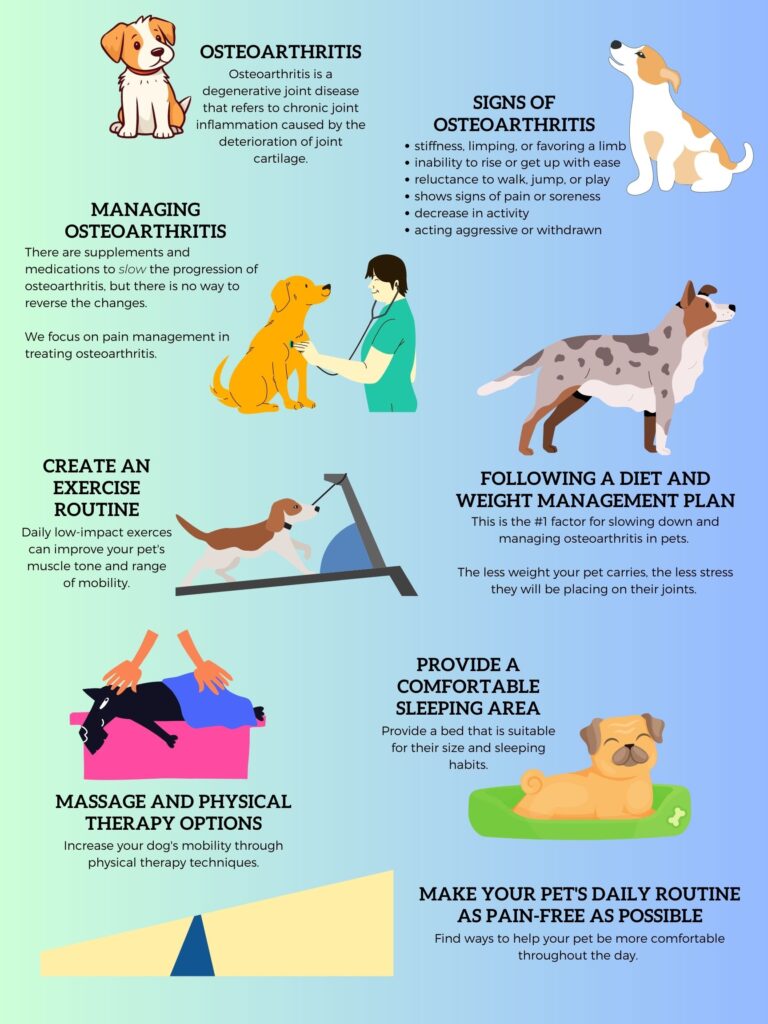
Pain: Don’t Let Pets Suffer in Silence
Pain is something that can affect our pets on a daily basis. The unfortunate thing is our pets can’t talk to us, and they don’t always show us they are in pain. That is why it is so important to learn about the signs associated with pain and how to help our pets!
Pain is officially defined as “an unpleasant sensory and emotional experience associated with actual or potential tissue damage.” This means that pain doesn’t only consist of the actual event (like a bee sting or cut on the paw), but there is an emotional component as well that can have detrimental effects on the body.
Acute vs Chronic Pain

Acute Pain
- surgery
- broken bones
- dental work
- burns or cuts
Chronic Pain
- osteoarthritis
- cancer
- nerve pain
- back pain (like IVDD)
Chronic pain is also more likely to have an increased emotional impact. Dogs and cats who have osteoarthritis are more likely to bite or scratch if they are bumped into or touched a certain way. They may even start to avoid certain activities or interactions to avoid the possibility of pain.

Other Signs of Pain:
- whimpering or vocalizing
- becoming quiet, withdrawn, and anti-social
- holding the ears flat against the head
- changes in personality
- increased panting and/or restlessness
Post-operative Pain (Acute Pain)
When your pets come to our clinic for a procedure that may cause them pain (spaying/neutering, dental extraction, mass removals, etc.), we use many different treatment modalities to help manage that pain.
- Pre-operative Pain Management: When we initially sedate your pets, we also include a pain medication that fits the type of procedure being performed.
- Peri-operative Pain Management: If appropriate, we will give your pet an injection of another type of pain relief (typically a non-steroidal anti-inflammatory medication) when they are under anesthesia. We may also use local anesthetics (like lidocaine) to numb the area where we may be operating. This adds additional pain relief.
- Post-operative Pain Management: Depending on the type of procedure, we typically perform a laser treatment at the surgical site. Laser therapy helps speed healing by increasing blood flow/circulation and decreasing inflammation at the surgical site.
- Home Pain Management: We typically send medications home with your pets to ensure they receive adequate pain relief at home as well during their recovery. Some pets require more pain medications than others, so if your pet seems painful despite getting its medications – let us know!
Osteoarthritis
Probably the most common cause of chronic pain is osteoarthritis. Osteoarthritis is a degenerative joint disease that refers to chronic joint inflammation caused by the deterioration of joint cartilage.

The majority of cats and dogs will develop osteoarthritis at some point in their life. Osteoarthritis is considered a progressive, secondary disease. This means that it is typically due to some other type of disease or abnormality in our pets (like hip dysplasia).

Identifying Osteoarthritis
It can be difficult to see signs of osteoarthritis in our pets because they are so good at hiding when they are painful sometimes! That is why companies like Zoetis have developed these awesome tools to help owners evaluate their pets’ behavior at home. Check out the links below for yourself! If you run through the exercise, submit this form for a chance to win one of several prizes!
Dog: https://www.zoetispetcare.com/checklist/osteoarthritis-checklist
Cat: https://www.zoetispetcare.com/checklist/osteoarthritis-checklist-cat
Osteoarthritis Treatment
It is important to catch osteoarthritis early so we can implement a tailored treatment plan for your pet!
- Nutrition: This is easily the most important factor for osteoarthritis. Many studies show that poor nutrition and obesity can accelerate the progression of osteoarthritis. Obese pets who lose ~6-8% of body weight will see significant improvement in lameness due to osteoarthritis.
- Exercise: Low-impact exercise will help strengthen pets and reduce the impact of osteoarthritis.
- Medications: Medications like non-steroidal anti-inflammatories (NSAIDs) help reduce pain and inflammation due to osteoarthritis. They are probably the most effective medication, but there are others (gabapentin, amantadine, tramadol, Solensia, Librela) that may add additional relief.
- Alternative Treatments: Other therapies like laser treatment, acupuncture, shockwave therapy, and hydrotherapy can offer a lot of pain relief and support for pets with osteoarthritis.
- Supplements: Joint supplements are probably more beneficial in the early stages of osteoarthritis (since they help protect the cartilage), but omega-3 fatty acids can be helpful in all stages of osteoarthritis as they are anti-inflammatory.
Please contact us to discuss treatment options for your pet! We will work with you to develop a plan tailored to help your pet the most.
Resources
Marcellin-Little DVM, DACVS, Denis. “Essential Canine Osteoarthritis Pain Management in 2023”. AVMA Convention 2023, 16 July 2023, Denver Convention Center, Denver, CO.
AAHA. Pain Management Guidelines for Dogs and Cats. AAHA and AAFP. 2015. ivapm.org/wp-content/uploads/2017/03/2015_aaha_aafp_pain_management_guidelines_for_dogs_and_cats-03.10.17.pdf.
